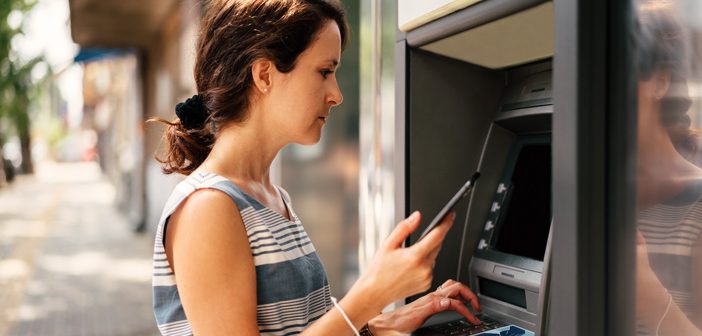When it comes to the security of your financial transactions, most of the focus these days is on online scams and theft—and rightly so. But it’s important not to let down your guard at a physical location where your money or information could be vulnerable: ATMs.
The good news is that there are techniques you can utilize to help make ATM use safe and problem-free. You can think of them collectively as The Five-S Plan:
Secure Your Information
- It may seem more convenient to leave your ATM card on your desk at work or in the glove box of your car, but anytime it’s not with you, it’s that much more susceptible to falling into the wrong hands.
- Security experts recommend never writing down your ATM PIN. Instead, if you’re having problems remembering your current number, think of one you won’t forget (like a particular date in your life) and contact your financial institution to make the change.
- It’s easy to panic when you lose your ATM card. But try to remember this calming fact: your financial institution doesn’t want you to lose money either. So whenever you can’t find your card, reach out to them as soon as possible so they can help you secure any accounts that may have been compromised.
- When it comes to keeping your details safe, an excellent question to ask yourself is, does this person REALLY need that information? For example, does this person on the phone REALLY need my ATM card details? In general, it’s also a good practice to avoid ever giving out your ATM or credit card information over the phone unless you’re sure you’re speaking directly to your financial institution.
Select The Right ATM
- Your best bet is to use an ATM operated by your financial institution at a location familiar to you. If this isn’t an option, try to choose a machine in a well-lit area not obscured by trees, bushes, or other objects that could be used by a thief to hide behind. Your Credit Union has a shared national network of over 30,000 ATMs so a safe location will always be near at hand.
- Speaking of well-lit areas, nighttime might not be the best time for your ATM transaction. If possible, try to anticipate late night needs for cash and withdraw earlier in the day. Or if possible wait until the sun is up.
- It’s wise to scan the area around the ATM when you arrive. If someone lurking nearby doesn’t seem to have a particular purpose for being there, it might be in your best interest to find a different ATM.
Safeguard Yourself At The Machine
- Try to make ATM transactions with a family member or friend when possible. Criminals are less likely to target someone who’s got a partner looking out for them.
- If you’re using a drive-up ATM, keep your doors locked, windows rolled up, and the engine running.
- If someone is standing closer than you’d like while you use the ATM, cancel your transaction, and find another machine to use. They might be trying to spy on your PIN.
- It’s natural to want to count your money after making a withdrawal, but doing so can give a crook an idea of how much money you took out while providing them extra time to approach you with ill intent.
- Take your receipt with you. While that little piece of paper doesn’t have all your personal information, it does contain bits of data fraudsters can use to steal your identity.
Stay Vigilant
- After you’ve withdrawn money, survey the area around you again. If someone is following you, head to the nearest place with people in or around it. As soon as you’re close to other people, take out your phone and call the police.
- It’s a good idea to monitor your online or paper statements regularly for fraudulent transactions. Contact your financial institution if something doesn’t look right.
Spot Skimming Scams
Skimmers are devices criminals attach to ATMs and other card-reading terminals to harvest sensitive information and fraudulently access accounts. In 2021 alone, there were over 5,500 known instances of skimmers attached to ATMs in the United States. Your best method for fighting this sinister tactic is to stay on the lookout for these crude electronic overlays. If you see a suspect ATM that matches these descriptions, report it to the machine’s owner and find another ATM to use:
- Loose plastic casing
- Misaligned pieces
- Sticky residue or tape
- Stiff buttons
- Wobbly keypad
- Cracked or damaged housing
- Oversized card slot
- Oddly-colored plastic around the card slot
- Unusual on-screen instructions
While the above tips may make the threat of ATM crime seem scary, none of the information is meant to alarm you. Ideally, it will help you feel less worried knowing you’ve taken the necessary precautions to secure yourself and your information.
And don’t forget to arm yourself against all manner of threats and scams with your Credit Union’s best-in-class Security Portal. It has up to date information on all manner of cons and scams. Be sure to check it out at figfcu.org/security-center and sign up for automatic alerts so you’re always in the know.





